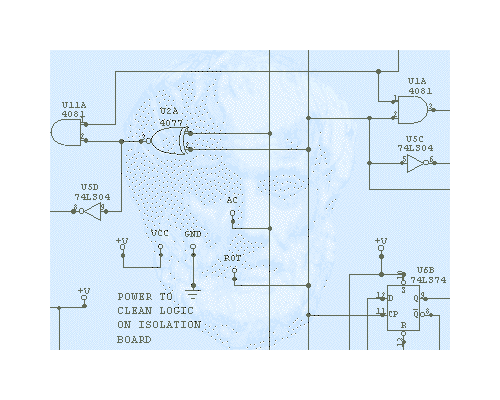
In the introduction to the course, we saw the importance of the logical structure of sentences in the analysis of arguments. It is, after all, the logical structure of sentences that underlies and forms the basis of the logical structure of arguments. Recall the stick argument: It revealed that any statement whatsoever can be inferred from a contradiction, such as our example, "the stick is standing in the corner."
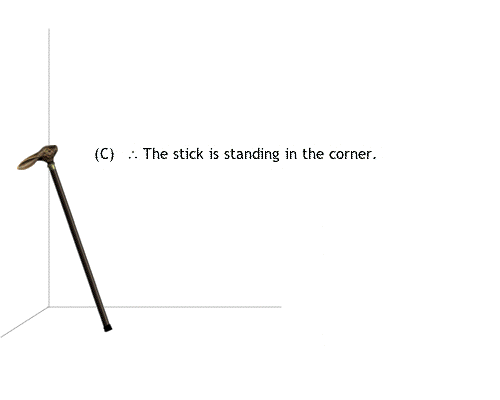
We argued to that the conclusion from the contradiction (1), Socrates exists and Socrates does not exist.
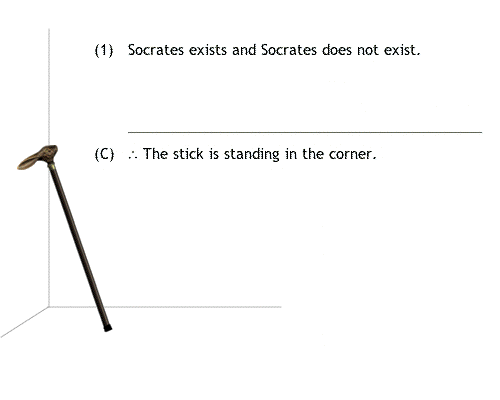
From (1) we obtain (2), and also (4) by using our understanding of the word "and".
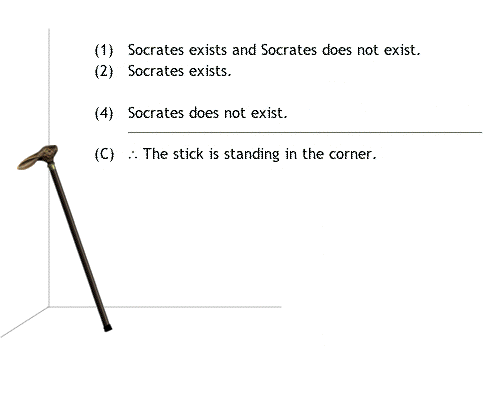
(2) allows us to infer (3) given our understanding of "or".
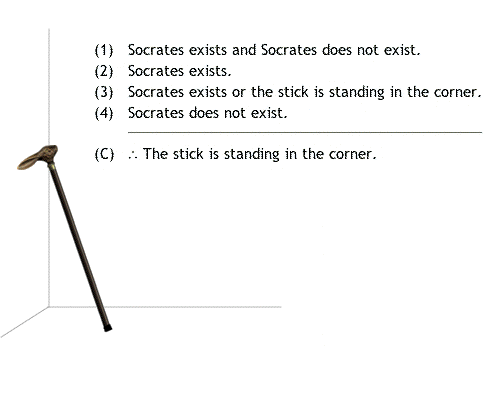
(3) and (4) then yield the desired conclusion. Beyond recognizing the logical structure of statements, we want to represent this structure in a precise way; that is absolutely crucial. How can such a representation be achieved? Well, we represent this structure by means of formulae in a logical or formal language.
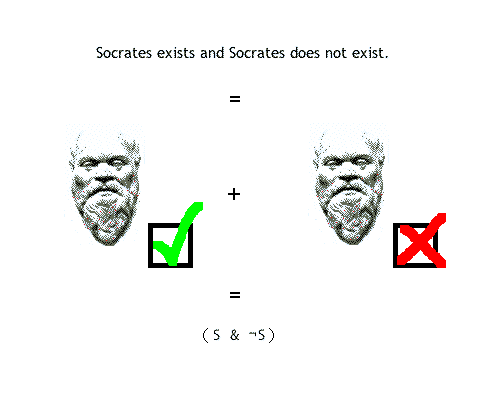
Such a formal language is specified by a comprehensive syntax: a set of syntactic or grammatical rules that determine which expressions belong to the language. These grammatical expressions are called formulae.
Constructing formulae is quite easy, and the process is already familiar: Just as the grammar of English tells you how to combine words and phrases of English to make larger expressions—sentences—the syntax of sentential logic tells you how to combine expressions of sentential logic to make larger expressions—formulae. Consider our contradiction "Socrates exists and Socrates does not exist." It is represented by the formula "( S & ¬S )".
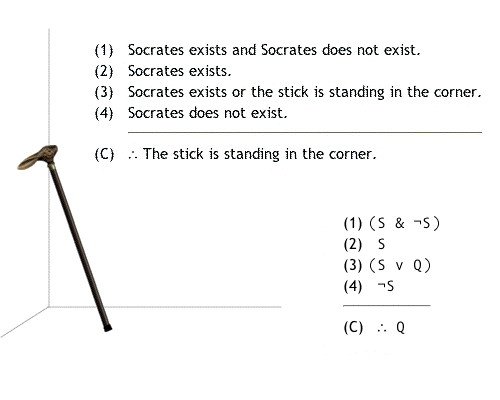
Let's come back to the stick argument and look at its formal version. The crucial role of formulae is, as has already been emphasized, to represent the logical form of sentences. Thus, we must also be able to translate English sentences into formulae of sentential logic that express the same statements as do the original sentences, and vice versa. Translating from English into sentential logic is often referred to as symbolizing, since we use symbols to represent the logical structure of the sentence. If Q stands for "the stick is standing in the corner", statements (2), (3), and (4) can be represented by the formulae seen here.
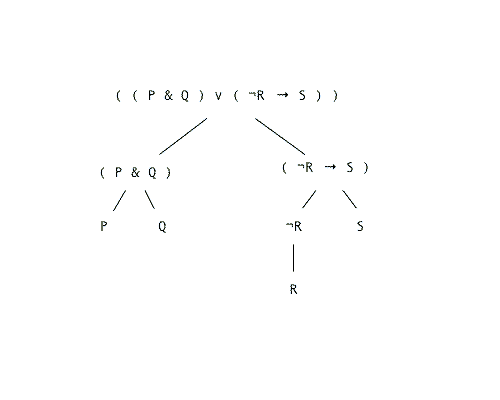
The way that formulae are built up according to the grammatical rules of the language can also be reflected by means of parse trees, a kind of diagram that graphically represent the syntactic structure of an expression.
The construction of a parse tree is a commonly used method for determining whether a particular string of symbols is or is not a formula of the language of sentential logic.
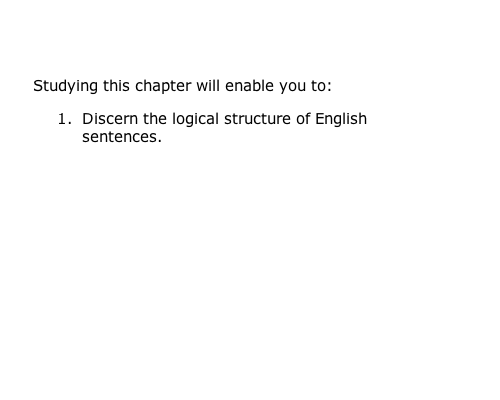
In this chapter you will learn how to discern the logical structure of English sentences,
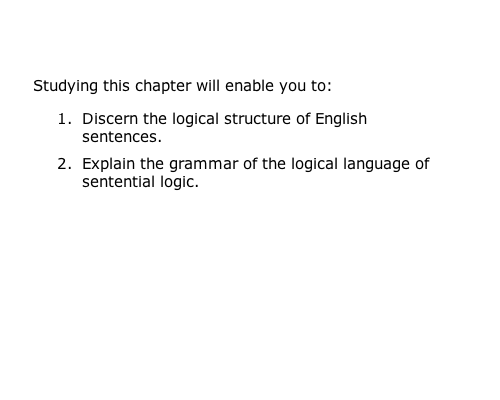
you'll learn the grammar of the logical language of sentential logic,
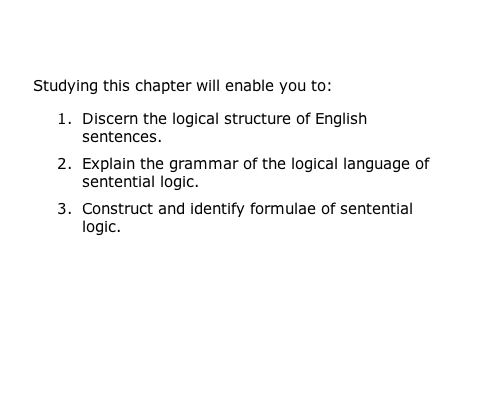
from there you will go on to learn how to construct formula of sentential logic,
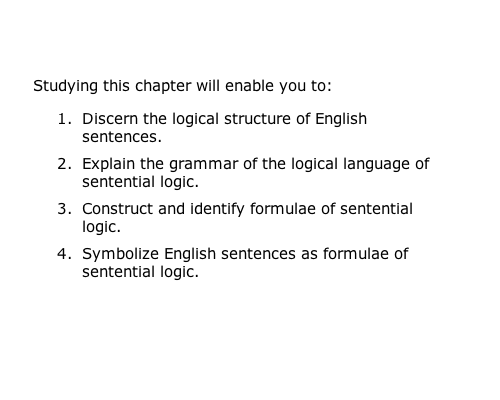
and how formulae of symbolic logic can be used to symbolize English sentences.
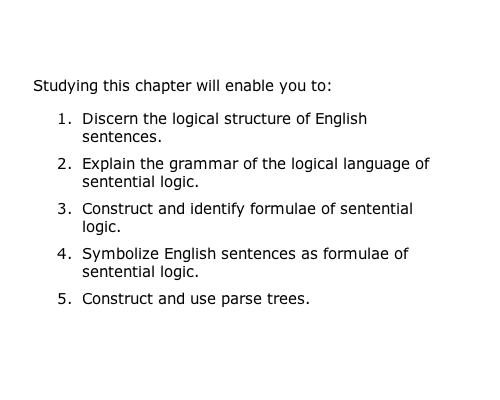
Finally, you will learn to construct parse trees and how to use them to determine whether or not an expression is grammatical.
Let's move on to begin learning this new and useful language.












